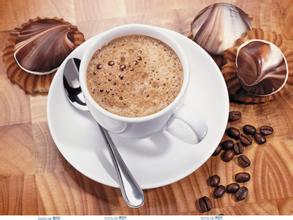Introduction to the Flavor description of Coffee from Nicaragua Los Congo Manor Coffee
Port city in southeastern Nicaragua, capital of Zelaya province. It is located at the mouth of the Escondido River in Bloomfield Bay. The population is 21000 (1980). It was a gathering place for pirates in the 16th and 17th centuries and later the capital of the British Moskitos coastal protectorate. It has been in Nicaragua since 1850. Due to the accumulation of sediment in the bay, import and export trade has to pass through the outer port of Bloom. Industry to wood processing, frozen sea shrimp, gold and silver jewelry processing. The house is made of wood and has a unique style. The steamboat can trace 100 kilometers from the Escondido River to the Nicaraguan national emblem in Lama, which was launched in 1971. The national emblem consists of three yellow edges symbolizing equality, truth and justice. The five green mountains symbolize Honduras, Guatemala, Nicaragua, El Salvador and Costa Rica, which used to make up the Central American Federation. Blue symbolizes the Pacific Ocean and the Caribbean Sea, which are separated by the Central American isthmus. The yellow on the top of the mountain reflects the volcanic plateau landform of the area. The "pole of freedom" and the "cap of freedom" are erected on the green mountain. The rainbow at the top symbolizes hope. The triangle pattern is surrounded by "Central America, Republic of Nicaragua" in Spanish. The English letters in the outer circle are the English names of Nicaragua, all in uppercase.
The excellent Nicaraguan coffee is among the highest in the world, it is mild and delicious, moderate granule, very fragrant. In many countries, coffee production has been seriously affected for political reasons. Nicaraguan coffee industry is no exception. The 1979 revolution forced coffee planters to flee to Miami. A period of uncertainty followed, when the government considered whether to redistribute land, including many plantations, which led to a shortage of coffee and a decline in production, from more than 1 million bags in the early 1970s to less than 600000 bags in 1990. Now the government has opened up the coffee industry and private owners have taken control of the market. The best Nicaraguan coffee is grown in the north and middle of the country, and the best coffee is produced in Jinotega and Nuevo Segovia in Matagalpa. The finest Nicaraguan coffee is classified as Middle Estrich Tamant Altura (Central Estrictamendte Altura) coffee, which has moderate acidity, delicious aroma and is very lovable. Poor quality coffee beans are widely used in mixed coffee. Lake Nicaragua has more than 300 islands, the smallest of which is only a few hundred square meters. the largest island is Ometepee, which is 26 kilometers long and 13 kilometers wide and covers an area of more than 300 square kilometers. there are two volcanic cones, one of which is 1610 meters high, and there are many historical relics of Mayan culture on the island.
The lake is full of waterbirds, and the lake is rich in all kinds of saltwater fish, such as crocodiles, sharks, sea turtles and so on. Sharks swim along the San Juan River in the Caribbean, so swimming is prohibited in Lake Nicaragua.
Watching large and small groups of turtles climb up the reef to bask in the sun is a view by the lake. The shore of Lake Nicaragua is shady with trees, dotted with many red-roofed pavilions, the lake is blue, the lake wind is familiar, waterbirds fly, fish jump out of the water from time to time, and the blue sky, white clouds, water light and lake color constitute a charming scenery. At the beginning of the 21st century, Lake Nicaragua has been on a par with the Masaya volcano and has become two famous landscapes in Nicaragua.
The Great Wall of Nicaragua
The Great Wall of Nicaragua is located 150 kilometers west of Managua, the capital of Nicaragua. It was originally a boundary stone for the land between Indian tribes, but also has a certain defense function, with a total length of 40 kilometers.

Important Notice :
前街咖啡 FrontStreet Coffee has moved to new addredd:
FrontStreet Coffee Address: 315,Donghua East Road,GuangZhou
Tel:020 38364473
- Prev

Description of Coffee Flavor of Joy Manor in Nicaragua introduction of Fine Coffee in producing area
Columbus arrived here in 1502 and reached the east coast of Nicaragua. In 1522, Spanish colonists began to conquer the region. The cities of Granada and Leon were founded in 1524. From then on, Nicaragua became a Spanish colony and came under the jurisdiction of the Governor's Office of Guatemala. The city of Leon developed into a political and cultural center; Granada became a commercial and agricultural center. In the later period of colonial rule
- Next

Introduction to the treatment of Grinding degree of Coffee varieties described by Mercedes Manor in El Salvador
El Salvador's domestic topography is mainly mountainous, plateau, volcanic, known as the country of volcanoes, Santa Ana active volcano 2385 meters above sea level, for the country's highest peak; the north of the country is the Lompa River Valley, the south is a narrow coastal plain El Salvador implements a representative democratic republic system of separation of powers, the president and vice president are directly elected by the whole country, may not be re-elected, judicial power is determined by
Related
- Does Rose Summer choose Blue, Green or Red? Detailed explanation of Rose Summer Coffee plots and Classification in Panamanian Jade Manor
- What is the difference between the origin, producing area, processing plant, cooperative and manor of coffee beans?
- How fine does the espresso powder fit? how to grind the espresso?
- Sca coffee roasting degree color card coffee roasting degree 8 roasting color values what do you mean?
- The practice of lattes: how to make lattes at home
- Introduction to Indonesian Fine Coffee beans-- Java Coffee producing area of Indonesian Arabica Coffee
- How much will the flavor of light and medium roasted rose summer be expressed? What baking level is rose summer suitable for?
- Introduction to the characteristics of washing, sun-drying or wet-planing coffee commonly used in Mantenin, Indonesia
- Price characteristics of Arabica Coffee Bean Starbucks introduction to Manning Coffee Bean Taste producing area Variety Manor
- What is the authentic Yega flavor? What are the flavor characteristics of the really excellent Yejasuffi coffee beans?

